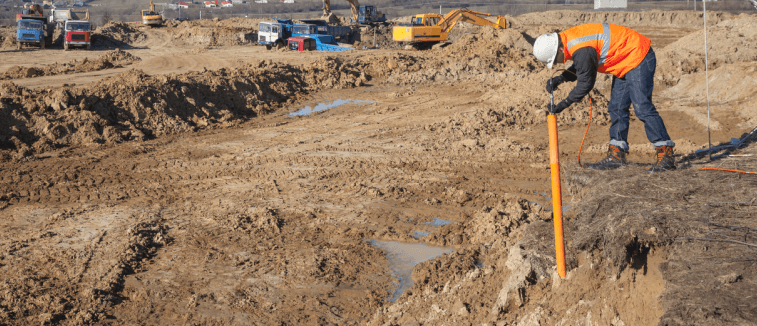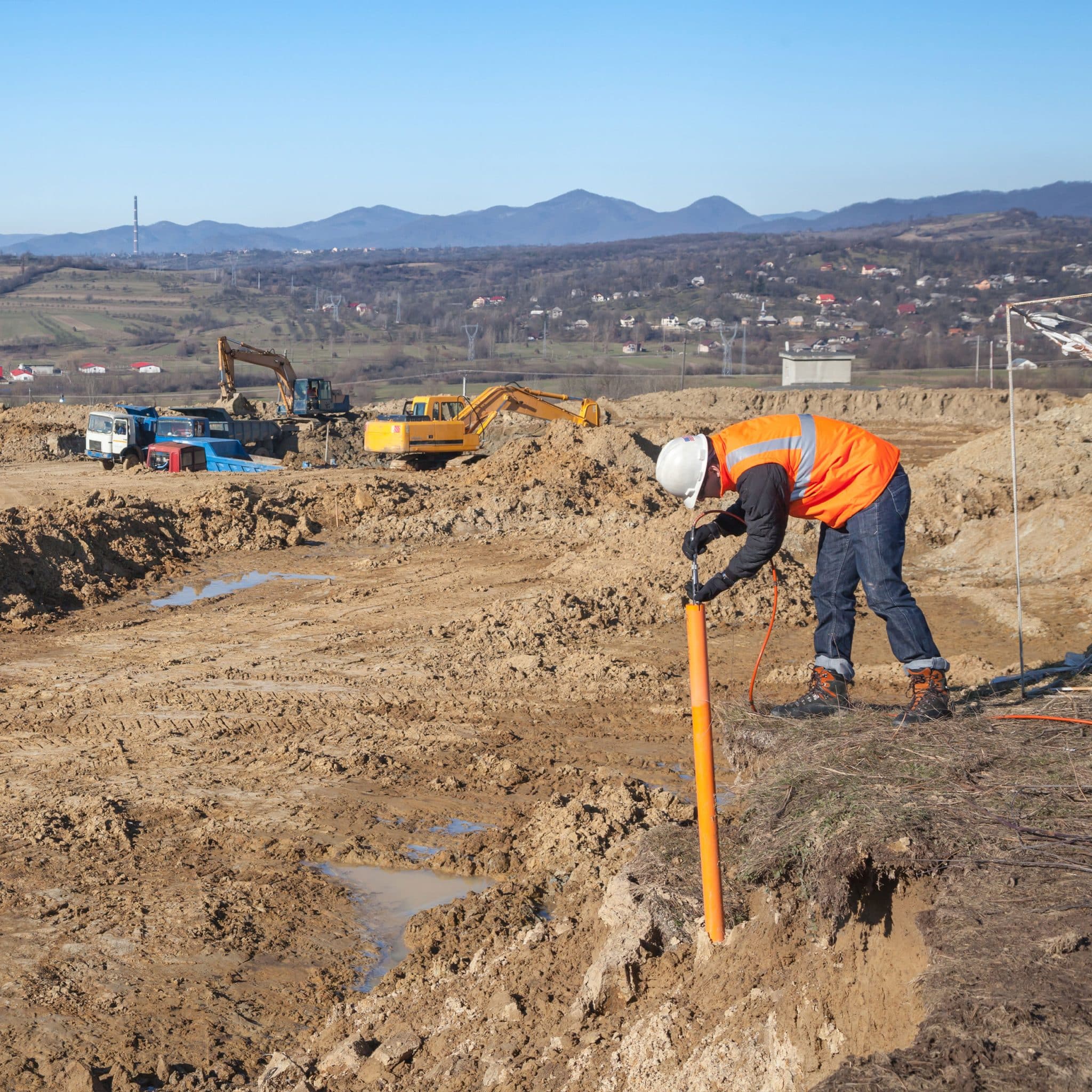Top Geotechnical Engineers for Cutting-Edge Dirt Evaluation and Structure Design
Top Geotechnical Engineers for Cutting-Edge Dirt Evaluation and Structure Design
Blog Article
Checking Out the Ingenious Techniques and Technologies Shaping the Future of the Geotechnical Market for Sustainable Design Solutions
The geotechnical market is undergoing a transformative shift, driven by cutting-edge techniques and modern technologies that highlight sustainable engineering remedies. Advanced dirt stabilization methods, making use of wise products, and the application of information analytics are redefining exactly how we come close to infrastructure obstacles. As these improvements advertise environmental stewardship, they also raise critical concerns about their sensible implementation and long-term performance. Understanding the interaction in between these innovations and their prospective to reinvent the area welcomes additional exploration into the future of lasting engineering practices.
Advanced Dirt Stablizing Methods
Soil stablizing is a critical process in geotechnical design, focused on enhancing the physical residential properties of dirt to enhance its load-bearing capability and resilience. Advanced soil stabilization methods play a pivotal duty in addressing difficulties connected with unstable or weak dirts, thus enabling risk-free and effective construction practices.
Among the famous methods, chemical stabilization involves the usage of additives such as lime, concrete, or fly ash, which respond with soil bits to form a much more natural mass. This technique is especially reliable in boosting the stamina and dampness resistance of extensive clay dirts. Mechanical stablizing, on the various other hand, involves the physical alteration of soil residential or commercial properties via compaction or the unification of granular products, leading to enhanced density and stability.
An additional innovative technique is using geosynthetics, which supply reinforcement and minimize soil erosion while improving water drainage. Strategies like dirt mixing and deep soil stablizing are likewise getting grip, enabling in-situ treatment of troublesome dirts. Jointly, these advanced techniques not just improve the efficiency of soil frameworks but also add to lasting design methods by lessening the need for substantial excavation and product transportation.
Smart Materials in Geotechnics
Advancement is at the center of geotechnical engineering, specifically with the unification of wise materials that boost the efficiency and performance of soil structures. Smart materials, such as shape memory alloys, piezoelectric materials, and self-healing polymers, are changing the way engineers come close to dirt stabilization and framework durability (tailings engineer). These materials can adapt to changing ecological problems, react to tension, and also repair themselves, significantly enhancing the resilience of geotechnical systems
For instance, piezoelectric materials can create electric charges in reaction to mechanical stress, offering potential for real-time tracking of dirt conditions and architectural stability. Self-healing materials can autonomously repair damages and splits, decreasing maintenance expenses and prolonging the lifespan of geotechnical possessions. The integration of these smart materials not only boosts the mechanical residential properties of dirt however also adds to lasting engineering methods by decreasing source intake and ecological influence.
As the geotechnical market continues to progress, the adoption of clever products will play a crucial role in developing cutting-edge remedies, making sure that frameworks are not just durable however likewise versatile to future obstacles. This transformative approach is positioned to redefine the standards of safety and security and efficiency in geotechnical design.
Data Analytics for Framework
The combination of clever products in geotechnical engineering has actually paved the method for advanced methods, particularly in the world of data analytics for infrastructure. This ingenious method leverages considerable information collection and analytical methods to boost decision-making procedures throughout the framework lifecycle. By using sensing units embedded in wise products, engineers can constantly keep track of important parameters such as soil stability, wetness degrees, and structural integrity.
Information analytics enables the transformation of raw information right into workable insights, enabling predictive upkeep and improved threat monitoring. Advanced algorithms and machine knowing methods help with the recognition of abnormalities and patterns, which can maximize and notify timely interventions source allotment. Furthermore, incorporating geographical info systems (GIS) boosts spatial analysis, further improving the decision-making framework.
By utilizing the power of information analytics, the geotechnical sector is placed to not just enhance current methods however also pioneer cutting-edge services for future infrastructure difficulties. This synergy his explanation of innovation and design concepts will certainly specify the future of lasting infrastructure development.

Lasting Ground Enhancement Approaches
Numerous sustainable ground renovation approaches are becoming essential options to address the challenges of geotechnical engineering while minimizing environmental influence. These approaches not just enhance soil efficiency but additionally advertise eco-friendly stewardship by lowering dependence on traditional, extra intrusive strategies.

An additional ingenious method is the application of geosynthetics, which consists of biodegradable products that reinforce soil while promoting water drainage and disintegration control - geo tech engineer. This minimizes the requirement for hefty machinery and minimizes website disturbance, hence maintaining local ecological communities
Furthermore, strategies such as dynamic compaction and vibro-replacement have developed to consist of lasting methods, minimizing and integrating recycled materials carbon impacts. These methods exemplify the industry's shift towards even more eco responsible remedies, ensuring that ground renovation not just meets engineering needs yet likewise contributes favorably to the surrounding setting.
Advancements in Ecological Tracking
In recent times, improvements in ecological tracking have actually considerably improved the capacity to analyze and handle geotechnical tasks with marginal environmental disturbance. Cutting-edge technologies, such as remote picking up, Internet of Points (IoT) devices, and real-time data analytics, are changing just how environmental influences are determined and minimized.
Remote noticing modern technologies, including satellite imagery and air-borne LiDAR, assist in the rapid evaluation of land use modifications and ecological problems - tailings engineer. These tools enable constant tracking of sites, enabling engineers to recognize potential issues prior to they escalate. Additionally, IoT tools, equipped with sensors for criteria like soil moisture, gas, and temperature emissions, offer live information streams that boost the understanding of site-specific environmental variables
Real-time information analytics additionally refine decision-making procedures by incorporating information from numerous resources, permitting aggressive management techniques. This alternative technique not only makes sure conformity with environmental guidelines however likewise advertises lasting techniques within the geotechnical market.
As these technologies proceed to evolve, they hold the possible to connect the space in between engineering goals and environmental stewardship, cultivating a more lasting future for geotechnical jobs worldwide.
Conclusion
Advanced dirt stablizing methods, the combination of smart products, and the application of data analytics jointly improve the durability and performance of facilities. These innovations not just address contemporary engineering obstacles but also pave the way for an extra lasting future in geotechnical methods.
Strategies like soil blending and deep dirt stablizing are likewise obtaining traction, enabling for in-situ therapy of troublesome dirts. Collectively, these innovative techniques not just boost the performance of dirt frameworks however additionally add to sustainable design techniques by minimizing the requirement for substantial excavation and product transport.

Report this page